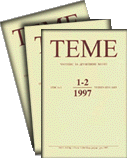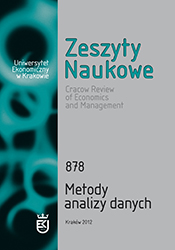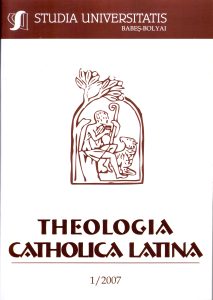




Every ethnicity has more or less rounded complex of ethnic, religious, and cultural characteristics. Their collection makes what we understand under notion "identity". Members of an ethnicity differ from other ethnic groups in respect to that identity. Of course, "clear' identity does not exist, but it is a fact that historically "older" nations have stronger identity while similar and "small" peoples insist extremely on identity differentiations; this influences their relations and can lead to intolerance and conflicts, even war. The question of globalization, which can damage identity of small peoples, was a topic of discussion at round table "Globalization, Acculturation, and Identity in Balkan", which was held on 12. December, 2002 at the Faculty of Philosophy in Nis, as a part of project "Cultural and Ethnic Relations in Balkan – Possibilities for Regional and European Integration". Reports from this round table will be presented after introductory article.
More...
Keywords: European Union; funds; cohesion; Polish regions; NUTS 2
Analiza statystyczna zróżnicowania wykorzystania środków unijnych przez polskie regiony szczebla NUTS 2 w okresie od stycznia 2007 roku do czerwca 2010 roku Poland is the largest beneficiary of the EU’s cohesion policy, scheduled for years 2007–2013. During this period, the European Union will grant projects under the Convergence objective and the European Territorial Cooperation objective to the tune of € 67.3 billion. Along with national co-financing the total value of projects using EU funds will amount to € 85.6 billion. The authors believe the midpoint of the EU’s ongoing financial plan is an appropriate time to assess the diversity of participation among Polish regions in the European Union’s cohesion policy. The aim of their research is to conduct statistical analysis of the diversification of EU fund use to achieve the objectives of European cohesion policy by the Polish NUTS 2 regions for the period from January 2007 to June 2010. The verification of hypotheses formulated, referring to the realisation of economic and social cohesion, is based on indicators proposed by European Commission. In turn, the authors propose indicators for determining the level of technical infrastructure development in order to study the realisation of territorial cohesion. They also discuss new and current applications of statistical methods.
More...
Keywords: economic growth; macroeconomic stabilisation indicator; golden rule of economic growth; pentagon of economic stabilisation
The paper presents developments in Poland and Ukraine in the years 1991–2009, focusing on the similarities and differences in the macroeconomic environment of the two countries. A pentagon of macroeconomic stabilisation is a basis for presenting the differences in the basic macroeconomic indicators in the two countries, while the “golden rule of economic growth” verifies the overall effectiveness of the two economies. The paper also presents projections for an increase in GDP in Poland and Ukraine in the context of the co-organisation of EURO 2012. The results of the analysis indicate different GDP growth rates in the two countries despite the similarities in their phases of economic development. The period of recession in Poland was exceptionally short, enabling the country to resume accelerated economic growth. Ukraine, despite a more drawn out transformation recession, has managed to catch up with Poland and other post-Communist countries that have become members of the EU. Economic growth projections for Poland and Ukraine until 2015 are 4.5%–5.5%, and 5.5%–6%, respectively, which might be attributed to the integration of the two countries with the European economy and the implementation of permanent economic growth policies.
More...
Keywords: internationalisation; region; regional development; regional development index
The article assesses the level of economic internationalisation and the socio-economic development of Poland’s regions and determines the correlations between the two phenomena. The analysis is based on several indices divided into ten components characterising the processes of internationalisation and socio-economic development. Instead of the standard procedure for verifying the preliminary list of indices (mostly based on correlation indices), a simulation has been used – 10,000 sets of random chosen indices to calculate the composite indices for each component. The final composite measures have been calculated as the mean of those 10,000 composite indices. This procedure allowed the authors to identify the differences in final results of analysis emerging from different sets of indices taken to assess the composite measures.
More...
Keywords: granger causality; var; steel; coke; coking coal market
Using quarterly data for the years 2003–2010, the authors describe the coking coal, coke and steel markets to determine whether there is a correlation between the market prices of coke, coking coal and steel. Coke, coking coal and scrap are all used to produce steel, and therefore the price of steel should depend on these raw materials. The price of steel also depends mainly on economic conditions. Vector autoregression models (VAR) are employed in the analysis.
More...
Keywords: empirical general equilibrium models; Metropolis-Hastings algorithm; numerical stability
The paper presents numerical issues related to the estimation of dynamic general equilibrium models with Bayesian techniques. As an illustrative example, a simple New-Keynesian model with nominal rigidities in price and wage settings is taken from the literature. Estimating structural parameters requires the application of numerical methods – optimization algorithms for maximum likelihood and Monte Carlo techniques for the Bayesian estimation of the Markov Chain. A broad literature that treats the estimation of dynamic macroeconomic models rarely presents any aspects of the numerical side of applications and its potential impact on results and inference. The paper concentrates on the issue of convergence criteria of the Markov Chain Monte Carlo techniques and the methods of monitoring parameter stability.
More...The paper examines Satie's oeuvre in a double perspective. In the first place, the essay interprets his work as a series of independent musical (or sonic) inventions that follow the spirit of the great 19th century technical innovators (like Marey, Muybridge, Edison and the Lumičres) and get out from the ideas of aesthetical autonomy. Secondly, the paper tries to disclose the reason why Satie recommenced his art almost then times in his lifetime.
More...Departing from the symbolic significance of the extraordinary circumstances in which Russian film director Andrei Tarkovsky's chef-d'oeuvre Stalker (1979) was produced, destroyed and re-shot, the essay attempts to interpret the film based on the primary importance the element of water has in both the film itself and in the director's theoretical views on image-time. Exploring a possiblme way film, photography and orhodox iconography are linked by the hermeneutics of testimony, the essay goes on to close reading of the visual unity and of some crucial parts of Stalker.
More...Based on Thomas S Kuhn's ''The Structure of Scientific Revolutions'' (1962) the essay analyses the paradigms and their shifts in the Old Testament. The first of these paradigms is that the world was created by the one God only, meaning that polytheism is abolished. Epitomized by the figure of Abraham and his quest for the fulfilment of God's promise, the second paradigm offers a new approach: every religion originates from Abraham, thus, Judaism, Christianity and Islam have the same desire for universality. The main figure of the third paradigm is Moses, who unifies the sons of the wandering patriarchs into God's people. The fourth paradigm deals with the establishment of the kingdom as the beginning of statehood. Then, the fifth paradigm is about the Babylonian captivity, the place of prolific literary production. Each paradigm has its symbolic place: paradise, the oak of Mamre, the tent, the temple and the synagogue. Interestingls, the latter two live together in harmony.
More...While the Revolution of the 1989 brought about a great change in the political life of Romania, it took more than a decade for this change to reach the cinema. The genuine and straightforward style of the yound talents who appeared around 2000 restored a kind of realism that was strictly robidden in the previous political era. The creators of the Romanian New Wave, like Cristi Puiu, Cristian Mungiu, Corneliu Porumboisu, Radu Jude use this realism to tell us about the past and present of Romania. They explain the corruption of society through the weakening bonds in the family; hence most of their films focus on the relationship between parent and child.
More...
Keywords: degrees; scientific societies
An essay on the easy way to become member of scientific societies and to obtain degrees in the USA.
More...
Keywords: genocide; Jews; extermination of Hungarian Jews; holocaust; Götz Aly; Christian Gerlach
A critical review on Chrisitan Gerlach's and Götz Aly's "Das letzte Kapitel: Der Mord an den ungarischen Juden".
More...
Keywords: sex; politics; gender; Feminism; Greeks; Freud; Foucault
A critical review on Thoma Laqueur's "A testet öltött nem [Making Sex]".
More...
Keywords: socio-linguistics; language; theatre; sociology; cultural anthropology; e-privacy; communication rights; freedom of thought; witchcraft
Éva Kocziszky on Max Picard's "A csend birodalma [The World of Silence]", Melinda Kovai on Miklós Kontra's (ed.) "Nyelv és társadalom a rendszerváltáskori Magyarországon [Language and Society in Hungary in the Period of Transition]", Ágnes Erdélyi on Ádám Nádasdy's "Ízlések és szabályok [Tastes and Rules]", Eszter Somorjai on Árpád Kékes Kun's "Thália árnyék(á)ban [Under Thalia's Shadow or Thalia in the Shadow]", Csaba Dupcsik on Pál Léderer's "A szociológus, a módszerei meg a szövege [The Sociologists, Their Methods and Their Discourse]", Ágnes Huszár on Margaret Mead's "Férfi és nő [Male and Female]", Bernadette Somody on Dr. Zolátn Galántai's "E-privacy olvasókönyv [E-Privacy Reader]" and Máté Dániel Szabó's (ed.) "Védett adataink [Our Protected Data]", Éva Simon on Gábor Halmai's "Kommunikációs jogok [Communication Rights]" and Péter Molnár's "Gondolatbátorság [Courage of Thought]", and G. Péter Tóth on Paul Boyer's, Stephen Nissenbaum's "Boszorkányok Salemben [Salem Possessed]".
More...
Keywords: bibliography
A bibliography of the important Hungarian books published in Summer 2003.
More...
The address focuses on the changing role of religion in contemporary society and its implications for theological education. The analysis departs from a symbolic representation of this change, the Ernst Seler-case. Christianity seems to gradually loose its importance in society. Attention is given to the phenomena of de-sacralisation, elimination of Christian symbols, denial of Christian origins. Most of these phenomena are understood to be rooted in the thinking of the Enlightenment. Theological education needs to be aware of these challenges and to be able to look for appropriate answers.
More...
This essay offers an overview of the development of Roman Catholic theological education in Transylvania up to the twentieth century. During the Middle Ages theological disciplines were taught in some places in the chapter schools of at Csanád, Nagyvárad, Gyulafehérvár. The Transylvanian theological education started at Kolozsvár (today Cluj-Napoca, Romania) in 1585, with the foundation of the Jesuit academy by Prince István Báthory. The institution had a thorny history in the 16–17th century, especially during the Reformed Principality, but contributed immensely to the development of higher education. In the 18th century Empress Maria Theresa had a major role in the enlargement of the University of Kolozsvár (Cluj) and in the promotion of Catholic theological edu¬cation. Due to the foundation of the seminary in Gyulafehérvár (Alba Iulia), and later on due to the educational policy of Joseph II, theological education in Kolozsvár (Cluj) came to an end. Up to the end of the 20th century the main centre for theological formation was Gyulafehérvár (Alba Iulia). The establishment of the Faculty of Roman Catholic Theology at the Babeş-Bolyai University inaugurated a new phase in the theological education.
More...